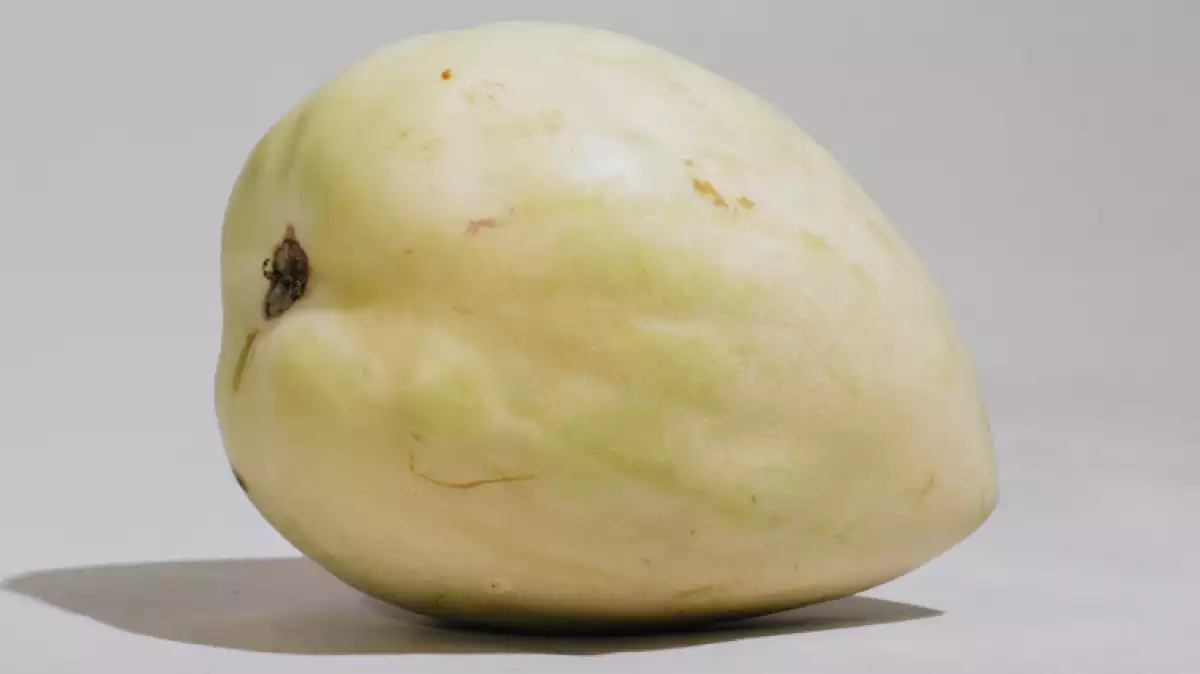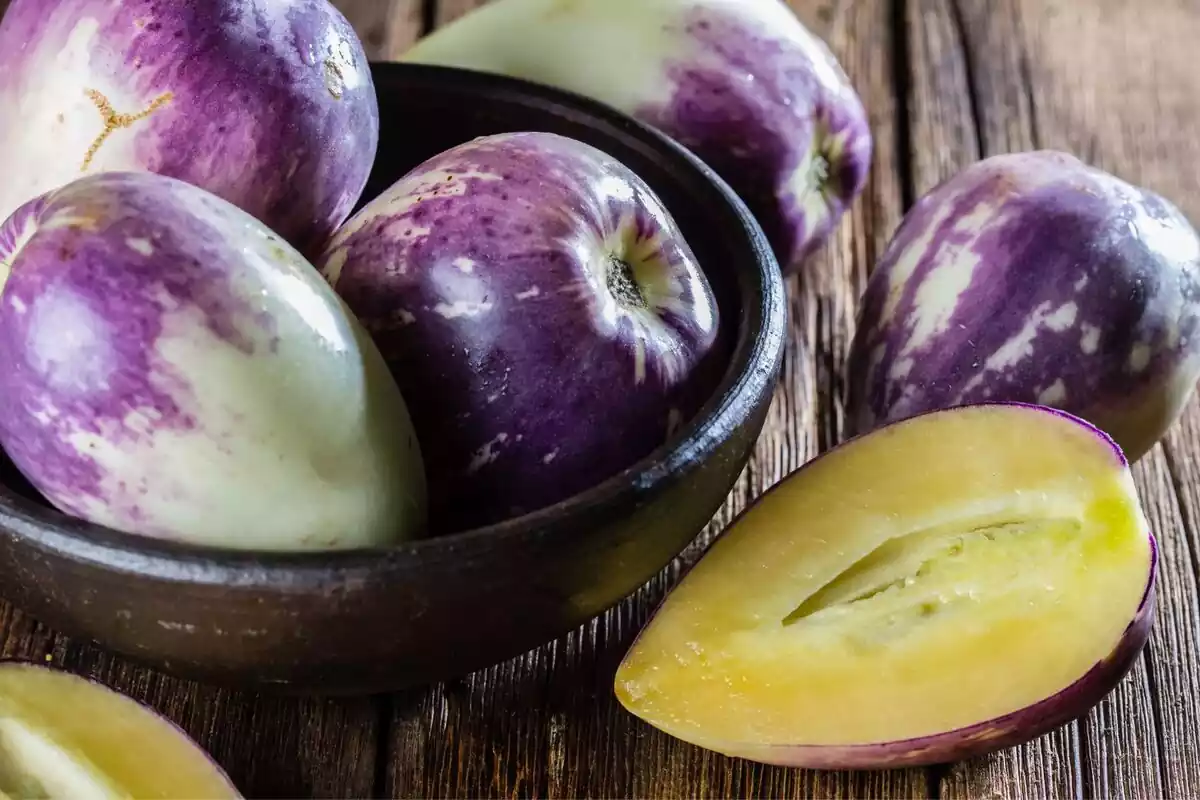Pepino melon, also called pepino dulce (sweet cucumber) is a fruit typical of the Andean regions of South America. This is the fruit of the pepino melon plant called Solanum muricatum, whose appearance is similar to that of a melon or a papaya fruit, although its taste is similar to a cucumber. We aim to explain what a pepino melon is, how to tell when it's ripe, how to prepare it, and ideas for home growth.
What is Pepino melon?
The pepino melon is a fruit known also as pepino dulce (sweet cucumber), melon pear, or tree melon that is part of the Solanum muricatum family of plants. One of the main characteristics is that the pepino melon plant makes seeds which turn into fruit. Solanum muricatum belongs to a class of plants called Solanaceae which are specifically cultivated in South America, although they can be grown in other regions of the world as well.
A typical plant of Ecuador, Columbia, and Peru, the pepino melon has been cultivated there for centuries, although currently, it can be found across Europe and the United States. In certain areas, this fruit is called a melon due to its appearance and taste, although other people know it as a variety of papaya.
The pepino melon has a teardrop shape and is yellow with beautiful purple streaks along its side. The melon is about the size of a hand, and firm, although it can grow to bigger sizes. The fruit is easily cut in half; the skin is thin and the middle contains a small cluster of edible seeds surrounded by pale orange flesh similar to that of the passion fruit.
Taste and flavor
Pepino melon is also known as pepino dulce due to its sweet taste. Depending on how ripe the fruit is, it can have fresh citrusy flavors hence the name melon. Although this fruit is sweeter than the classic melon, they still have similar tastes regarding juiciness and sugar levels although some claim it tastes more like a cucumber.
Nutrition facts
Traditionally, the pepino melon has been used due to its rich flavor. It does have, however, many health benefits due to its nutritional content. A mature pepino melon contains the following:
Sugars (saccharose - more than 50% -, fructose y glucose).
Citric acid
Polysaccharides (carbohydrate molecules that store energy)
Vitamin C
Protein
Fiber
Regarding the nutritional value of the pepino fruit, a 2011 study concluded that depending on the temperature, color, nutrients and properties of this fruit, once it dehydrates it loses the protein and fiber as well as its vitamin C content.

Health benefits of pepino melon (Solanum muricatum)
The health benefits of the pepino melon are very similar to those of citrus sweet plants - they can prevent common colds, and boost your immune system. Therefore, the tree melon has been generally used as a homemade remedy for ailments such as tonsilitis or other mild inflammation of the throat. As it is the case with other types of fruit, the pepino melon is also used as a sugar substitute in diets that control glucose levels.
Due to its high content of natural sugar, however, this fruit should be consumed with moderation. Other health benefits of this fruit include detoxing and antioxidant properties as well as preventing constipation (though it doesn't cure it). Finally, another study on the benefits of the Solanum muricatum (not the fruit this time) has indicated that the use of this plant inhibits tumor growth.
Is it ripe?
The best way to assess if a pepino melon is ripe is by judging its color and size, but mostly the color. In the early stages of maturation, the fruit will have green skin. As the fruit gets riper it changes color into an orange hue and finally turns yellow, with possible green streaks.
Nevertheless, this fruit can be eaten before it ripens fully. Its taste will probably be more citrusy and less sweet which makes it a perfect addition for salads. When fully ripe, the melon tastes much sweeter and makes for an ideal snack or dessert.

How to eat - Recipes
As mentioned before, the pepino dulce can be used in a variety of recipes although it can also be enjoyed fresh on its own. A simple way of eating this fruit is to cut it in small pieces and cover them with thin slices of Serrano or Iberico ham. The combination of tastes renders a deliciously refreshing snack. Another easy plate is to cut the melon in pieces and powder it with chile such as Tabasco, tajin, or Valentina.
You can also use this sweet fruit to make a simple salad with cherry tomatoes, chopped cabbage, green or red peppers, feta cheese or mozzarella, a little olive oil, salt and pepper to taste. Lastly, the pulp of the melon is ideal to make flavored waters. This simple recipe can be made by peeling the melon, cutting it in small bits and blending it until you achieve a creamy consistency. You can add water and sugar or a natural sweetener to enhance the taste.
In the video below you will find different ways of enjoying this nutritious fruit:
How to enjoy Pepino Melon
Growing pepino melon
Seeing how the pepino melon is the fruit of a plant, we must first harvest the tree from which it originates. Unlike many trees, however, the seeds are not very useful in terms of growing this plant. Instead, we use bits of the plant itself due to the high germination properties they have. The pepino plant flourishes in tropical climates and on coastlines.
Agricultural studies have found that the tree melon is generally harvested one a year, although this depends greatly on the size of the cultivated area - in forests they tend to be harvested once every other year. The Andes area offers an altitude of 3500 m which is ideal for the plant in that area, while in the Mediterranean they grow at altitudes of 500 m. In winter, greenhouses are used to grow the plant and the process is similar to tomato cultivation. This fun plant can be grown indoors and has just recently started to become common in U.S. markets.
- This article about "Pepino Melon" was originally published in Spanish in Viviendo La Salud
References:
Di Scala, K., Vega-Gálvez, A., Uribe, E., Oyanadel, R., et al. (2011).Changes of quality characteristics of pepino fruit (Solanum muricatum Ait) during convective drying. Food Science + Technology, 46(4): 746-753.
Prohens, J., Ruiz, J.J. y Nuez, F. (1996). The pepino (Solanum muricatum, Solanaceae): A “New” crop with a history. Economic Botany, 50(4): 355-368.
Redgwell, R. y Turner, N. A. (1986). Pepino (solanum muricatum): Chemical composition of ripe fruit. Journal of Science of Food and Agriculture. 37(12): 1217-1222.
Ren, W. y Tang, D.G. (1999). Extract of Solanum muricatum (Pepino/CSG) inhibits tumor growth by inducing apoptosis. Anticancer Research, 19(1A): 403-408.
Valera, J. (2014). Dieta andina: 1980 recetas de cocina saludables. Publicación electrónica: Lima, Perú.
